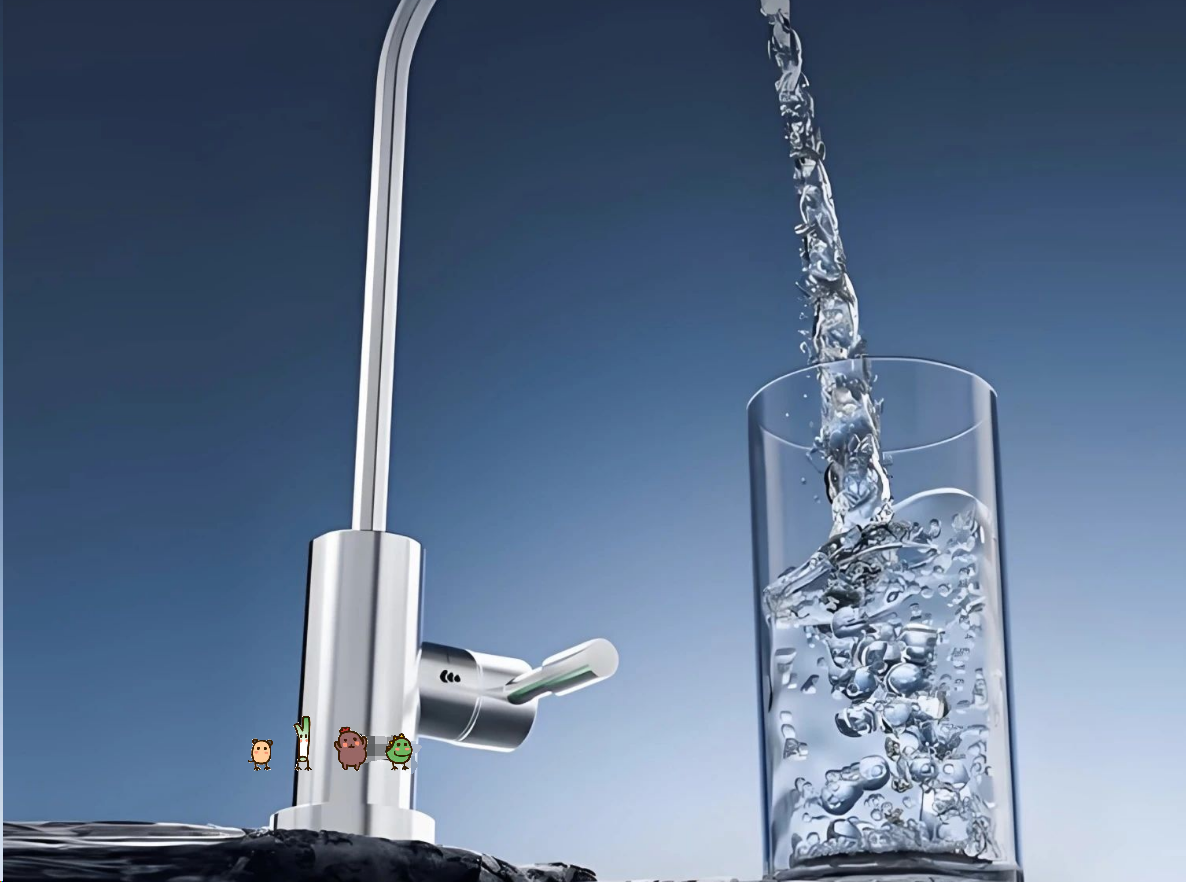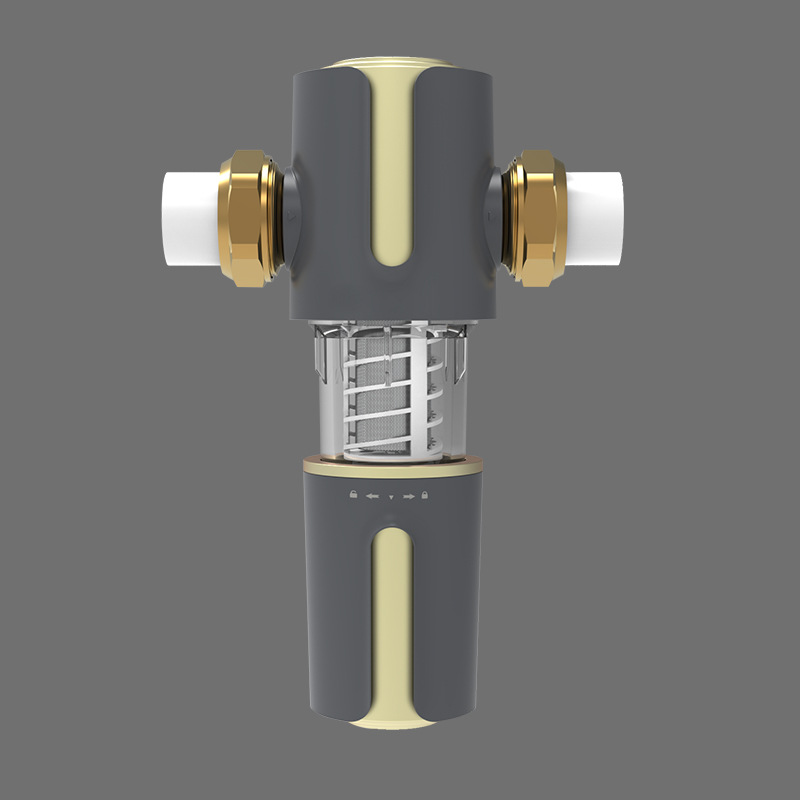Hello everyone, I'm Susan~ Today we're going to talk about a topic that every household is concerned about - tap water pollution and the role of water purifiers. Did you know? During the transportation process, tap water may encounter secondary pollution, including heavy metal pollution, excessive fluoride, plastic particle pollution and other problems. Oh, does it sound a bit scary? Don't worry, let's take a deeper look.

Let's talk about secondary pollution of tap water first. Did you know that sometimes the water flowing out of the tap at home is yellow or even black, which is a direct manifestation of secondary pollution. This pollution may come from old pipes, dirt in water storage facilities, or other pollutants from unknown sources. Think about it, do you dare to drink such water directly?

Let's talk about heavy metal pollution. If some industrial wastewater and waste gas are not handled properly, they may penetrate into groundwater, causing excessive heavy metal content in tap water. Drinking such water for a long time can cause great harm to the body!
Excessive fluoride is also a problem that cannot be ignored. Although the right amount of fluoride can help prevent tooth decay, excessive fluoride can cause harm to the body, especially to the development of bones and teeth.
There is also plastic particle pollution, which sounds terrible, right? After some plastic waste decomposes in the environment, it will form tiny plastic particles, which may enter the tap water system through various channels and finally be drunk by us.

Having said so much, you may ask, what should we do? Don't worry, this is where the water purifier comes in handy! The water purifier can effectively filter out various pollutants in tap water, including heavy metals, fluoride, plastic particles, etc. It is like a "security guard" for our household water, ensuring that every drop of water we drink is clean and safe.

Here are some key data and facts to help us better understand the important role of water purifiers in household water safety:
1. Secondary pollution of tap water and the filtering effect of water purifiers
Current status of secondary pollution: According to surveys, more than 95% of the pipes in domestic buildings use galvanized iron pipes, which are prone to rust and flow out with tap water, causing water pollution. In addition, secondary water supply facilities such as water tanks and pools may also become a source of pollution if they are not managed properly.
 Water purifier filtration effect: High-end water purifiers such as RO reverse osmosis technology or nanofiltration technology can effectively remove pollutants such as rust, silt, bacteria, viruses, and heavy metal ions in water. For example, RO reverse osmosis technology can remove more than 99% of impurities and pollutants in water to ensure the purity of the effluent water quality.
2. Heavy metal pollution and water purifier protection
Water purifier filtration effect: High-end water purifiers such as RO reverse osmosis technology or nanofiltration technology can effectively remove pollutants such as rust, silt, bacteria, viruses, and heavy metal ions in water. For example, RO reverse osmosis technology can remove more than 99% of impurities and pollutants in water to ensure the purity of the effluent water quality.
2. Heavy metal pollution and water purifier protection
Hazards of heavy metal pollution: Long-term drinking of water containing excessive heavy metals will have serious effects on human health. For example, excessive lead may cause damage to the nervous system and delayed intellectual development of children.
 Water purifier removal rate: High-quality water purifiers have a heavy metal removal rate of more than 99%, which can effectively ensure the safety of drinking water.
3. Fluoride content and water purifier adjustment
Water purifier removal rate: High-quality water purifiers have a heavy metal removal rate of more than 99%, which can effectively ensure the safety of drinking water.
3. Fluoride content and water purifier adjustment
Fluoride limit standards: Different countries and regions have different limit standards for fluoride, but they are generally stricter. For example, the fluoride limit standards in China and Japan are 1mg/L.
Water purifier adjustment function: Some high-end water purifiers have the function of intelligently adjusting the fluoride content to ensure that the water quality meets the local drinking water standards, preventing tooth decay without exceeding the standard.
4. Plastic particle pollution and water purifier filtration
The current situation of plastic particle pollution: Studies have shown that nanoplastic particles exist in both tap water and bottled water, which may pose a potential threat to human health.
 Water purifier filtration capacity: Through advanced filtration technologies such as reverse osmosis and nanofiltration, water purifiers can effectively remove plastic particles and other tiny pollutants in water. Studies have shown that water purifiers can remove more than 84% of plastic microparticles/nanoparticles in water.
5. Long-term impact of water purifiers on family health
Reduce disease risk:
Water purifier filtration capacity: Through advanced filtration technologies such as reverse osmosis and nanofiltration, water purifiers can effectively remove plastic particles and other tiny pollutants in water. Studies have shown that water purifiers can remove more than 84% of plastic microparticles/nanoparticles in water.
5. Long-term impact of water purifiers on family health
Reduce disease risk: After installing a water purifier in a home, the quality of drinking water is significantly improved, which helps to reduce the risk of various diseases caused by water pollution, such as gastrointestinal diseases, skin diseases, etc.
Improve quality of life: Water purifiers can not only provide safe and pure drinking water, but also improve the taste and smell of water to improve the overall quality of life of the family.

Water purifiers have significant advantages in ensuring the safety of household water use and improving the quality of life. Through scientific data and facts, we can see the powerful ability of water purifiers in filtering pollutants and regulating water quality. Therefore, it is a wise choice to install a high-quality water purifier for the health and happiness of your family.

The benefits of installing a water purifier are more than that! It can also improve the taste and smell of water, making drinking water more enjoyable. Moreover, long-term use of a water purifier can also protect the health of your family and reduce the risk of various diseases caused by water quality problems.
So, whether to install a water purifier is really not a small issue. It is related to our daily quality of life and even more to the health of our family. What do you think?











 Still drinking “tap water”? Whole house water purification system is really too fragrant
Still drinking “tap water”? Whole house water purification system is really too fragrant
 Why are you being advised to install a water purifier?
Why are you being advised to install a water purifier?
 Water purifier + pre-filter, IQ tax or life necessity?
Water purifier + pre-filter, IQ tax or life necessity?
 Water purifier purchase nanny level strategy: from classification to avoid the pit, read this not to spend the wrong money!
Water purifier purchase nanny level strategy: from classification to avoid the pit, read this not to spend the wrong money!